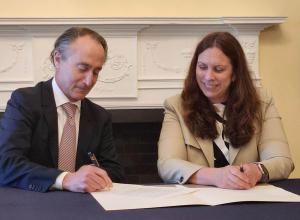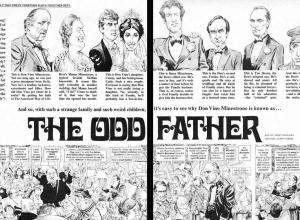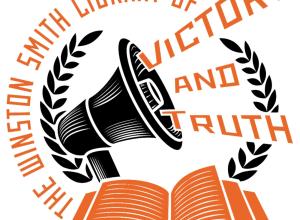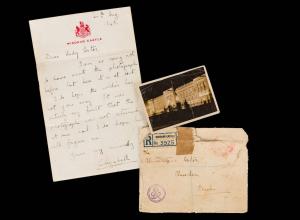Steven Raab on Founding a Historical Documents Business 35 Years Ago

An early Raab ad
In 1985 my wife bought me a check signed by Orville Wright. I had no idea there was a market for autographs like that, and I was excited and began to look into it. I discovered an entire industry and began to buy autographs.
Initially I bought from dealers in the Philadelphia market, especially Bob Batchelder, Catherine Barnes, and David Holmes. I’d go into their offices, browse through their binders, ask lots of questions, and come home with the fascinating information they gave me, in addition to an autograph or two. At this time I was practicing law and had no thought of becoming an autograph dealer.
I also met Neale Lanigan at Arader Galleries. Neale had been in the field for decades, and seeing the depth of my interest, began to advise me about what to get, what to avoid, and what fair prices would be for the items I wanted. I found that autograph dealers issued catalogs, and did most of their business through those catalogs. Neale would meet me after work at Borders coffee shop, walk me through the catalogs, comment on the pieces, and make specific recommendations.
Neale had been a protege of the great Mabel Zahn, and not infrequently in some lesson or other, I could hear Mabel’s voice. There is nothing Neale didn’t know about autographs, and day by day, over the years, he taught me the autograph trade. I was especially interested in the reasons he had for why to get, or not to get, specific autographs. With his help, and long hours of lessons in Borders, I gathered knowledge and began to build a good collection.
Fast forward to 1989. At this point I had three kids in private school and began to feel that the only way for me to free up money and continue collecting was to turn over the pieces that no longer met my standards and replace them with others I wanted. It also struck me that it would be very useful if I could find a way to be approached by sellers directly and thus buy wholesale through sellers rather than retail through dealers.
While these thoughts were churning in my mind, my mother died, and I felt I needed something to keep me busy. So I decided to issue catalogs to sell my expendable stuff. Thus was born Steven S. Raab Autographs. I did all the work on it myself. Catalog 1 contained hundreds of pieces. I wrote all the descriptions, Xeroxed the pages, and stapled the sheets together. Nothing sophisticated about it. It appeared in March 1990. I took out ads in autograph magazines inviting people to send for catalogs and had a good response. Before the Internet was an active tool for dealers, paper was the way to buy, sell, and advertise. The best way to reach the market was through print publications and direct mail, a big difference from today’s online marketplace and digital advertising and marketing. For this first ad, I only took in $5,000, which was discouraging. I began to question whether becoming a dealer was such a good idea after all.
I decided to give it one more try and to have the catalog professionally printed. Catalog 2 was small and had a signed photo of Winston Churchill on the cover. Neale Lanigan brought his expertise and drafted the descriptions. Soon after it was issued, the phone started ringing. I began getting orders, good orders. One call came from Jim Blanchard of Jefferson Rarities, a respected figure in the field. He told me I was on to something, told me to keep going and I would be successful. Soon after that, at an auction in New York, Ken Rendell approached me and complimented me. We took in close to $20,000. I was getting some important recognition and the catalog was a success. Also, many sellers actually contacted me, and I saw the fruits of buying direct. For example, a dealer in the South offered me the birth certificate of the Confederacy – the document from the floor of the South Carolina secession convention calling for formation of a Southern Confederacy. I bought it. I was amassing a good inventory. There was no looking back now.
From 1989 until 1993, I was on my own in running the business. I put myself on the catalog list of dozens of dealers, and when one of their catalogs came in through the US postal service (not much Fedex back then for this purpose), I put down everything to look through it. It was crucial to act quickly, as even a moment’s delay could mean that someone else would get it. No browsing websites and getting marketing emails. It was direct visit or the mailman. When I saw the original letter of Theodore Roosevelt saying “Speak softly and carry a big stick” in Bob Batchelder’s catalog, I ordered it that very second. Good thing I acted fast, as he got a lot of requests for it.
It is interesting to note that I primarily looked to dealers for autographs; auctions were decidedly playing second fiddle at this stage for me.
Another way to market was through shows and collectible paper fairs. Where each day today is an online show, back then to see all a dealer’s inventory at once, you could visit them or go to a fair. I began exhibiting at autograph shows, to buy, to sell, and to attract new customers. Seeing Catherine Barnes at an autograph show displaying the order signed by President Lincoln blockading the South at the start of the Civil War, I bought it on the spot. It was at another show that we found a Supreme Court decision signed by John Marshall. What a find! We had precious papers from Anne Frank’s family about her and her sister. At a show we sold those to a museum. That’s how it went at shows: be vigilant, check out everything, and you would frequently be rewarded.
In 1993, seeing the business taking off, my wife Susan joined me. She built our catalogs (four or five per year) to send to the printer, and in this she proved to be an innovator in the field. Back then, catalogs were mainly just text. She scanned everything and displayed the entire inventory in images. This was the dawn of personal page building software on a mass schedule. Perhaps even more important, she recognized that the name of the game was quality, and under her tutelage we stopped buying routine things and concentrated on the best. And that is what The Raab Collection stands for to this day.
In 1995, Neale came to work with us full-time. We traveled everywhere to look at collections, and it sure was fun. I particularly recall a collector in Philadelphia who had a collection of a thousand military autographs; we were stupefied. Another time a woman named Lorraine Wagner called us to see a letter of Frank Sinatra, and to our shock, she also had a collection of hundreds of letters of Ronald Reagan written to her over the course of fifty years. We obtained the collection, which is now in an institution. As for Lorraine, she is now known as Reagan’s pen pal.
1995 was a special year for another reason. A client of my law office told me about something called the Internet, and he demonstrated it for me. He showed me that you could travel everything around the world right from your computer, and how a search could yield a million hits. I immediately saw the potential in this: we could put catalogs online to get sales, have a search engine where people could search for things they wanted, and also have a place where people from anywhere could sign up. So we went to a tech guy, and he built us a website where clients could buy things from us online, interact with us via email, and read information we put on the website.
It is hard to imagine doing all this in today’s environment, where the cost to start from scratch and the barriers to entry are so high. I wonder whether starting 5-10 years later would have made it nearly impossible. But this is how it worked in the late 80s and early 90s.
This is a guest post by attorney, author, and collector Steven Raab, founder of The Raab Collection which marks its 35th anniversary this year.















